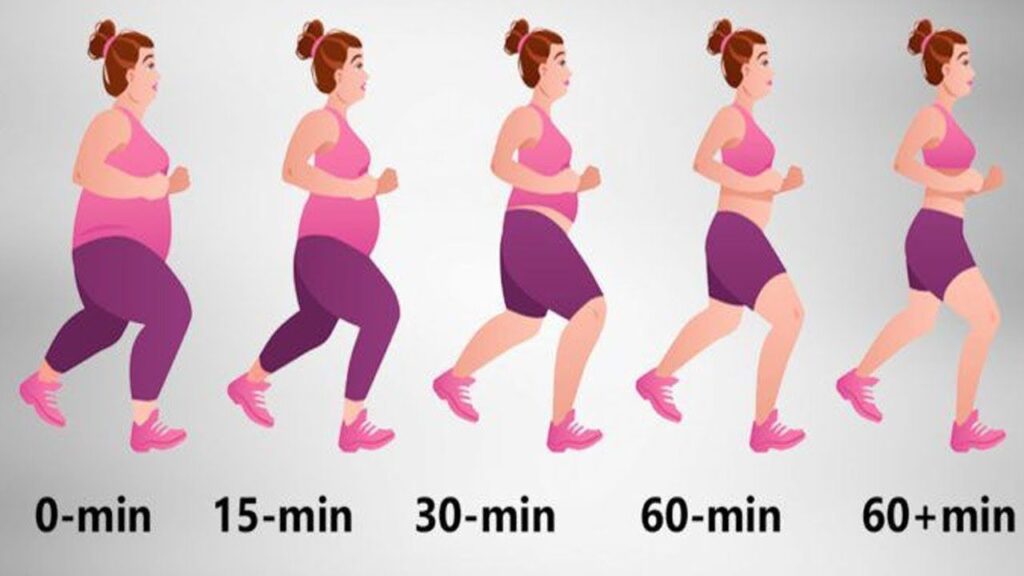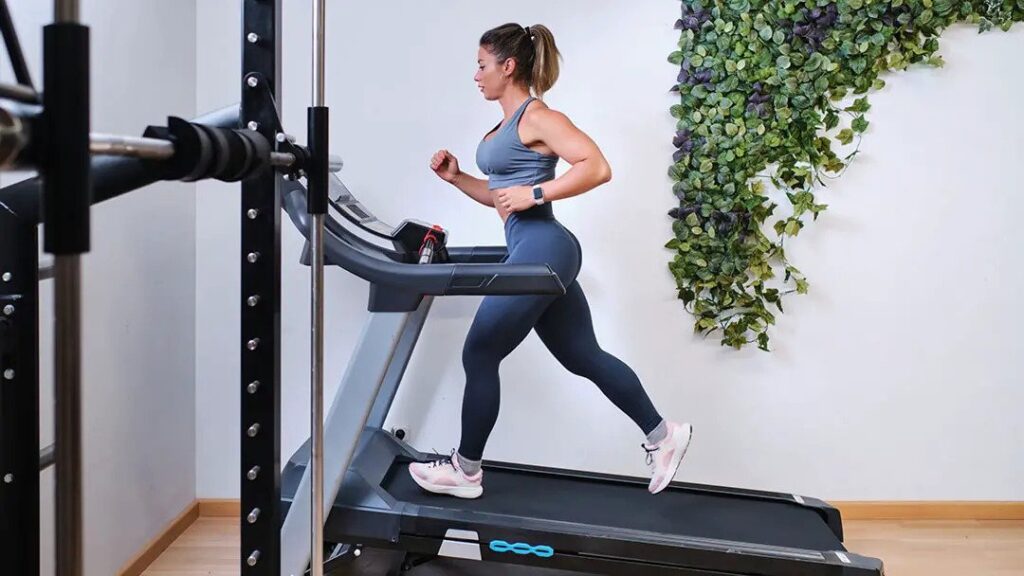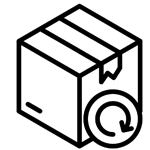Did you know that while holding onto the treadmill during your workout, you may be burning fewer calories than you think? It’s a common misconception that gripping the rails for extra support or balance doesn’t make a significant difference, but recent studies have shown otherwise. In fact, experts suggest that letting go and engaging your upper body can actually help you maximize your calorie burn and overall fitness level. So, if you’re looking to amp up your workout routine and shed those extra pounds, it may be time to reconsider your grip on the treadmill.
![]()
Factors Affecting Calorie Burn on a Treadmill
Type of Exercise
When it comes to burning calories on a treadmill, the type of exercise you choose plays a significant role. Walking and running are two common options, each resulting in different calorie burn rates.
Walking vs. Running
While walking is generally less intense and requires less energy, it still provides a good workout and burns calories. On the other hand, running typically requires more effort and can lead to a higher calorie burn. Your choice between walking and running on the treadmill can depend on your fitness level, preferences, and overall goals.
Incline and Speed
The incline and speed settings on a treadmill can greatly impact calorie burn. Walking or running uphill, or setting the treadmill to a higher speed, increases the intensity of the workout and thus burns more calories. It is important to gradually increase the incline and speed to avoid overexertion and ensure safety.
Duration of Workout
The length of your treadmill workout also contributes to the number of calories burned. Generally, the longer you engage in physical activity, the more calories you will burn. However, it’s important to find a balance that suits your fitness level and avoids excessive strain.
User’s Body Weight
Your body weight is an influential factor in determining the calories burned during a treadmill workout. Heavier individuals tend to burn more calories because it requires more energy to move a larger mass. However, it’s crucial to note that overall fitness level and metabolism also play a role in calorie burn.
Age and Gender
Age and gender can impact calorie burn on a treadmill due to variations in muscle mass, metabolism, and physiological differences. Generally, men tend to have higher muscle mass and therefore burn more calories. Age can also affect metabolism and the body’s ability to burn calories efficiently. It’s important to take these factors into consideration when planning your treadmill workouts.
Effects of Holding onto the Treadmill
Reduced Arm Movement
One of the primary effects of holding onto the treadmill while walking or running is reduced arm movement. When you hold onto the handrails, your arms are unable to swing naturally, resulting in less overall movement and potentially a decrease in calorie burn.
Altered Body Mechanics
By holding onto the treadmill, you alter your body mechanics, shifting your weight forward and leading to an unnatural posture. This can impact the efficiency of your workout and potentially lead to strain on certain muscles or joints.
Lower Energy Expenditure
Studies have shown that holding onto the treadmill can significantly reduce energy expenditure during walking or running. By relying on the handrails for support, your body’s workload is decreased, resulting in fewer calories burned.
Engagement of Core Muscles
Not holding onto the treadmill encourages stronger engagement of the core muscles. When you rely on your core for stability, you activate and strengthen these muscles, leading to improved posture, balance, and overall calorie burn.
Comparing Calories Burned with and without Holding Treadmill
Studies and Research Findings
Several studies have been conducted to evaluate the impact of holding onto the treadmill during exercise. These studies consistently demonstrate that holding onto the handrails reduces the calories burned during a workout. It is important to consider these findings when deciding whether or not to hold onto the treadmill.
Difference in Energy Expenditure
The difference in energy expenditure with and without holding onto the treadmill can be substantial. Research suggests that by letting go of the handrails, you can increase your calorie burn by up to 20%. This significant difference highlights the importance of proper technique during treadmill workouts.
Impact on Workout Intensity
Holding onto the treadmill not only affects calorie burn but also has a direct impact on the intensity of your workout. By holding onto the handrails, you essentially reduce the effort required, resulting in a less intense workout. For those looking to challenge themselves and achieve maximum results, it is advisable to avoid holding onto the treadmill.
Effectiveness of Holding Treadmill
While holding onto the treadmill may provide a sense of security and stability, it is important to recognize that it compromises the effectiveness of your workout. By relying on external support, you are not fully engaging the muscles and pushing your body to its full potential.
Tips for Maximizing Calorie Burn on a Treadmill
Proper Walking or Running Form
One of the most important tips for maximizing calorie burn on a treadmill is to ensure proper walking or running form. Maintain an upright posture, with your shoulders relaxed and your head facing forward. Avoid slouching or leaning forward excessively, as this can reduce the effectiveness of your workout.
Utilizing Proper Arm Swing
To optimize calorie burn, utilize proper arm swing while walking or running on the treadmill. Keep your arms relaxed and bent at approximately a 90-degree angle. Allow them to swing naturally with each stride, engaging the muscles in your upper body and increasing energy expenditure.
Adjusting Incline and Speed
To enhance calorie burn, don’t be afraid to adjust the incline and speed settings on your treadmill. Gradually increase the incline to challenge your lower body muscles and boost intensity. Similarly, adjusting the speed can simulate running or walking at a faster pace, resulting in increased calorie burn.
Adding Interval Training
Incorporating interval training into your treadmill workouts can significantly increase calorie burn. Alternate between periods of high intensity and recovery, pushing your body to work harder and burn more calories. Intervals can be achieved by adjusting speed, incline, or a combination of both.
Optimizing Workout Duration
Finding the optimal duration for your treadmill workouts is crucial. While longer workouts generally lead to more calorie burn, it’s essential to listen to your body and not overexert yourself. Start with shorter sessions and gradually increase the duration as your fitness level improves.
Increasing Overall Physical Activity
Maximizing calorie burn on a treadmill doesn’t have to be limited to your time spent solely on the machine. Look for opportunities to increase your overall physical activity throughout the day. Take the stairs instead of the elevator, go for a walk during your lunch break, or engage in other forms of exercise to complement your treadmill workouts.

Importance of Engaging Core Muscles
Core Muscles and Stability
Engaging the core muscles is crucial for stability during treadmill workouts. Your core muscles, including the muscles in your abdomen, back, and pelvis, provide a solid foundation for your movements and help maintain balance.
Benefits of Core Engagement
Engaging your core while on the treadmill offers numerous benefits beyond stability. It improves posture, helps prevent injuries, and enhances overall body strength. When you engage your core, you activate more muscles throughout your body, leading to increased calorie burn.
Enhanced Calorie Burn
By engaging your core muscles, you create a more efficient movement pattern, leading to increased calorie burn. The engagement of core muscles adds stability and balance to your workout, allowing you to focus on the purpose of the exercise rather than using other body parts for support.
Improved Posture and Balance
Proper core engagement on the treadmill promotes good posture and balance. This not only reduces the risk of injuries but also leads to a more effective workout. When your body is properly aligned, you can move more efficiently and avoid putting unnecessary strain on certain muscles and joints.
Reduced Risk of Injury
Engaging your core helps protect your spine, which is especially important during treadmill workouts. A strong and stable core helps distribute the impact forces evenly, reducing the risk of lower back or joint injuries. By maintaining proper form and engaging your core, you can exercise safely and minimize the chance of injury.
Common Mistakes to Avoid
Leaning on the Console
A common mistake when using a treadmill is leaning on the console or dashboard for support. Leaning on the console not only hinders the proper form but also reduces the effectiveness of your workout. Keep your body upright and avoid relying on external support during your treadmill sessions.
Using the Handrails Excessively
Another mistake is excessive use of the handrails. While it may be tempting to hold onto the handrails for support, this can compromise your form and decrease overall calorie burn. Train yourself to let go of the handrails and engage your core and upper body muscles for stability during your workout.
Not Maintaining Proper Technique
Maintaining proper technique is crucial for maximizing calorie burn on a treadmill. Avoid slouching, leaning too far forward, or excessive bouncing. Instead, focus on an upright posture, engage your core, and ensure that your strides are smooth and controlled.
Ignoring Proper Warm-up and Cool-down
Skipping the warm-up and cool-down phases of your treadmill workout is a common mistake that can lead to injuries and decreased performance. It’s important to warm up your muscles and gradually increase your heart rate before starting intense exercise. Similarly, cooling down and stretching afterward can help prevent muscle soreness and promote recovery.

Alternative Methods for Increasing Calorie Burn
Incorporating High-Intensity Interval Training
High-Intensity Interval Training (HIIT) is an effective method for increasing calorie burn on a treadmill. By alternating between short bursts of intense exercise and periods of active recovery, you can push your body to its limits and maximize calorie expenditure.
Adding Weighted Vest or Ankle Weights
To challenge yourself further and increase calorie burn, consider incorporating a weighted vest or ankle weights during your treadmill workouts. These additional weights can provide resistance and increase the demand on your muscles, resulting in a higher calorie burn.
Utilizing Resistance Bands
Another option to enhance calorie burn is to use resistance bands while walking or running on the treadmill. By incorporating upper body exercises with the bands, you engage more muscles and increase the overall intensity of your workout.
Trying Treadmill Workouts with Incline
Adding incline to your treadmill workouts is an effective way to increase calorie burn. Incline simulates walking or running uphill, challenging your muscles and increasing the intensity of your workout. Experiment with different incline levels to find the right balance of challenge and safety.
Other Factors Influencing Calorie Burn
Fitness Level and Conditioning
Your overall fitness level and conditioning play a significant role in calorie burn on a treadmill. Those who are more physically fit tend to have higher stamina and endurance, allowing them to exercise at a higher intensity and burn more calories. However, it’s important to note that everyone’s fitness level is unique, and it’s crucial to listen to your body and progress at your own pace.
Metabolic Rate
Metabolic rate, or the speed at which your body burns calories at rest, also influences calorie burn on a treadmill. Individuals with higher metabolic rates naturally burn more calories during exercise. While metabolic rate is largely determined by genetics, factors such as age, gender, and muscle mass can also impact it.
Environmental Factors
The environment in which you perform your treadmill workouts can affect calorie burn. Higher temperatures or humidity levels may cause your body to work harder and thus increase calorie expenditure. On the other hand, exercising in a cold environment may lead to a higher calorie burn as your body works to maintain its internal temperature.
Hydration and Nutritional Status
Proper hydration and nutritional status can also impact calorie burn on a treadmill. Staying adequately hydrated ensures that your body functions optimally and maintains energy levels during exercise. Additionally, consuming a balanced diet with the right nutrients supports overall performance and can contribute to more efficient calorie burn.

Balancing Calorie Burn and Safety
Prioritizing Safety during Exercise
While it’s important to focus on maximizing calorie burn, safety should always be a top priority. Avoid overexertion and know your limits. If you experience pain or discomfort during a treadmill workout, slow down or stop and consult a healthcare professional if needed.
Gradually Increasing Intensity
To prevent injuries and ensure long-term progress, gradually increase the intensity of your treadmill workouts. Start with shorter sessions at a comfortable pace and gradually add more challenging elements, such as incline, speed, or interval training. This gradual progression allows your body to adapt and reduces the risk of overuse injuries.
Avoiding Excessive Strain
Pushing yourself is important for achieving fitness goals, but it’s equally important to avoid excessive strain. Know when to rest and recover, and listen to your body’s signals. Overtraining can lead to fatigue, decreased performance, and an increased risk of injuries.
Keeping Hydrated
Proper hydration is essential for overall health and safety during treadmill workouts. Drink water before, during, and after your sessions to maintain proper fluid balance and help regulate body temperature. Pay attention to your body’s hydration needs and adjust accordingly, especially in high-temperature environments or during intense workouts.
Conclusion
Calorie burn on a treadmill is influenced by a variety of factors, including exercise type, intensity, duration, body weight, age, and gender. Holding onto the treadmill can reduce calorie burn and have various effects on your workout. Proper technique, engagement of core muscles, and avoiding common mistakes are key to maximizing calorie burn. Alternative methods, such as interval training and resistance exercises, can also increase calorie expenditure. Consider individual factors like fitness level, metabolic rate, and environmental conditions when planning your treadmill workouts. Ultimately, finding the right balance between calorie burn and safety will help you achieve your overall fitness goals and preferences.






